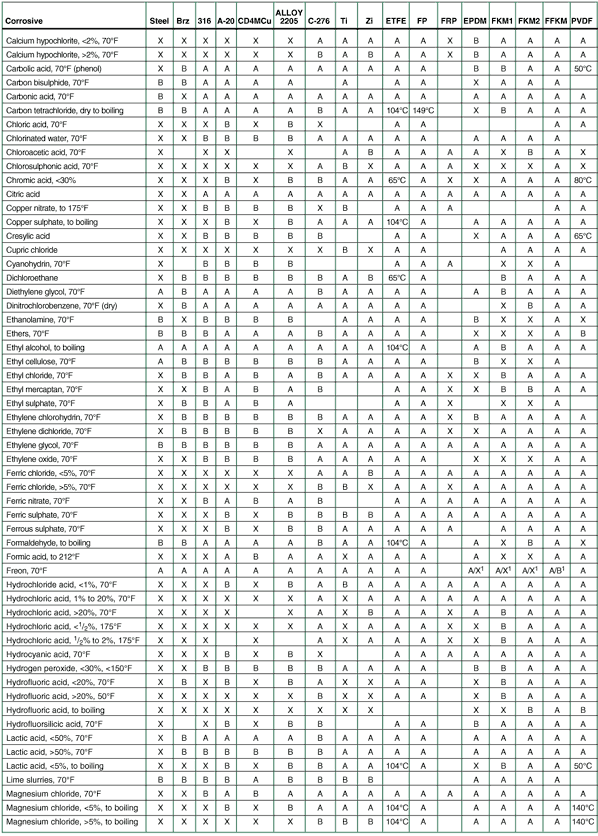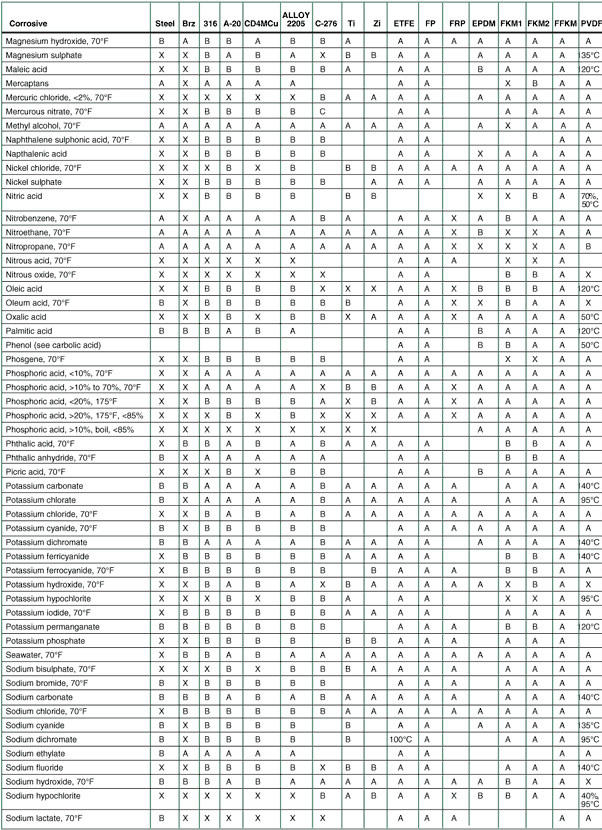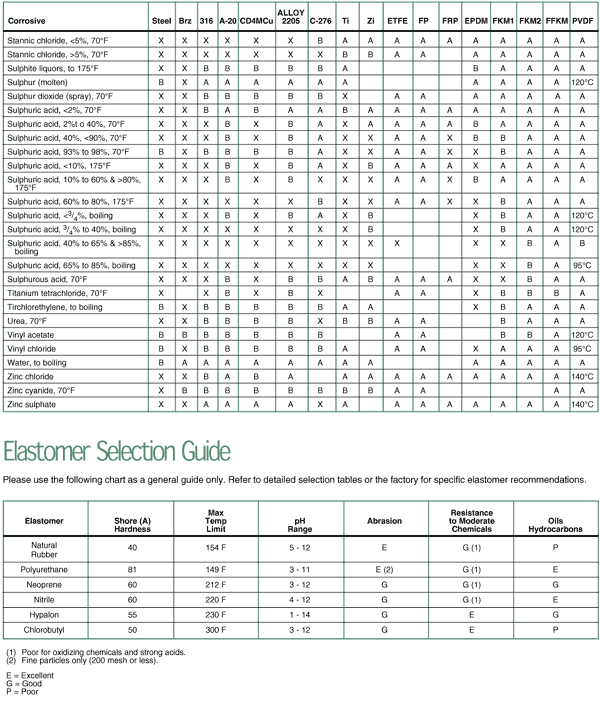This chart is intended as a guide in the selection of economical materials. It must be kept in mind that corrosion rates may vary widely with tem-perature, concentration, and the presence of trace elements or abrasive solids. Blank spaces in the chart indicate a lack of accurate corrosion data for those specific conditions. In general, the chart is limited to metals and non-metals regularly furnished by ITT-Goulds.
Note: Maximum temperature limits are shown where data is available. Contact a Goulds representative for temperature limits of all materials before final material selection.
Code:
Note: Maximum temperature limits are shown where data is available. Contact a Goulds representative for temperature limits of all materials before final material selection.
Code:
| A | Recommended |
| B | Useful resistance |
| X | Unsuitable |
| Steel | Carbon steel, cast iron and ductile iron |
| Brz | Carbon steel, cast iron and ductile iron |
| 316 | Stainless steel |
| A-20 | Carpenter stainless |
| CD4MCu | CD4MCu stainless steel |
| Alloy 2205 | 2205 Alloy 2205 stainless steel |
| Alloy 2205 | Alloy 2205 stainless steel |
| C-276 | Wrought Hastelloy ? C-276 alloy |
| Ti | Titanium unalloyed |
| ETFE | Ethylenetetrafluoro-ethylene (Tefzel ? ) FP Fluoropolymers (e.g.,Teflon ? ) including perfluoroalkoxy (PFA), polytetrafluoroethylene (PTFE) and fluorinated ethylene propylene (FEP) |
| FRP | Fiber-reinforced plastic (vinylester resin) |
| EPDM | Ethylenepropylene rubber (Nordel ? ) |
| FKM1 | Standard grades; dipolymers of hexafluoropropylene (HFP) and vinylidene fluoride (VF 2 ) (Viton ? ) |
| FKM2 | Specialty grades; terpolymerscomprising at least three of the following: HFP, VF2 , tetrafluorethylene (TFE), perfluoromethylvinyl ether (PMVE) or ethylene (E). Specialty grades may have significantly improved chemical compatibility compared to standard grades in many harsh chemical environments (Viton ? ). |
| FFKM | Copolymer of TFE and PMVE (Kalrez ? ) |
| PVDF | Polyvinylidene fluoride (Kynar ? , Solef ? ) |
| 1 Compatibility is dependent on specific freon. Contact elastomer manufacturer. | |
Table 1

Table 2

Table 3

Table 4



